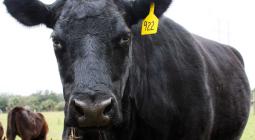Is There Such a Thing As 'Better' Meat? It’s Complicated
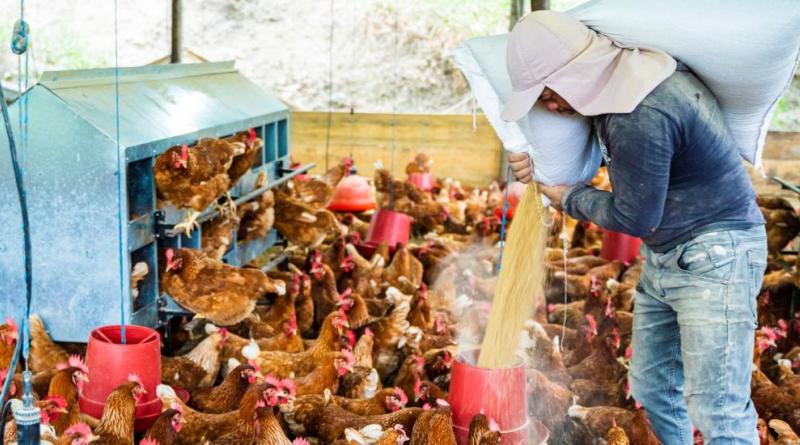
Cover Image by: Rass Films/iStock
Meat and dairy are major contributors to climate change. Animal agriculture is responsible for more than three-quarters of agricultural land use, 11%-20% of global greenhouse gas (GHG) emissions and more than 30% of global methane emissions. Meat production is also a leading driver of recent tropical deforestation.
The good news is that companies and consumers are increasingly looking for more sustainable animal products. But reducing emissions is just one piece of the puzzle. So are addressing water use, water pollution and biodiversity loss driven by animal agriculture; improving animal welfare; supporting local farmers and more.
The problem is that there’s no single solution to tackle all these priorities at once.
Indeed, new analysis from WRI finds that options such as organic and grass-fed meat — which can improve animals’ lives and reduce antibiotic usage, among other benefits — often come with higher GHG emissions and environmental impacts than conventional production. And while there are proven methods to reduce these impacts on the planet, it can be challenging to encourage farmers and ranchers to implement them. Tracking progress across complex supply chains is also difficult.
Reducing overall meat and dairy consumption is an essential step toward slashing food-related emissions and achieving global climate goals. But the fact remains that many people eat meat. As companies and individuals wrestle with how to reduce the impacts of the animal products they will continue to source, clearly defining what “better” meat means to them and understanding the benefits and trade-offs of different production methods is a critical first step.
What Is “Better” Meat?
“Better” meat can mean different things to different people. For some, it means better performance against environmental, social, ethical or economic attributes. This could include lowering methane emissions, avoiding sourcing from deforestation hotspots, increasing farmers’ incomes or improving animals’ lives. It could mean sourcing meat that consumers think tastes better. It could also mean improving soil health, on-farm biodiversity or productivity.
Others associate “better” meat with alternative agricultural production systems such as organic, grass-fed or free-range, or with meat and dairy products that are locally produced or raised without antibiotics or growth hormones.
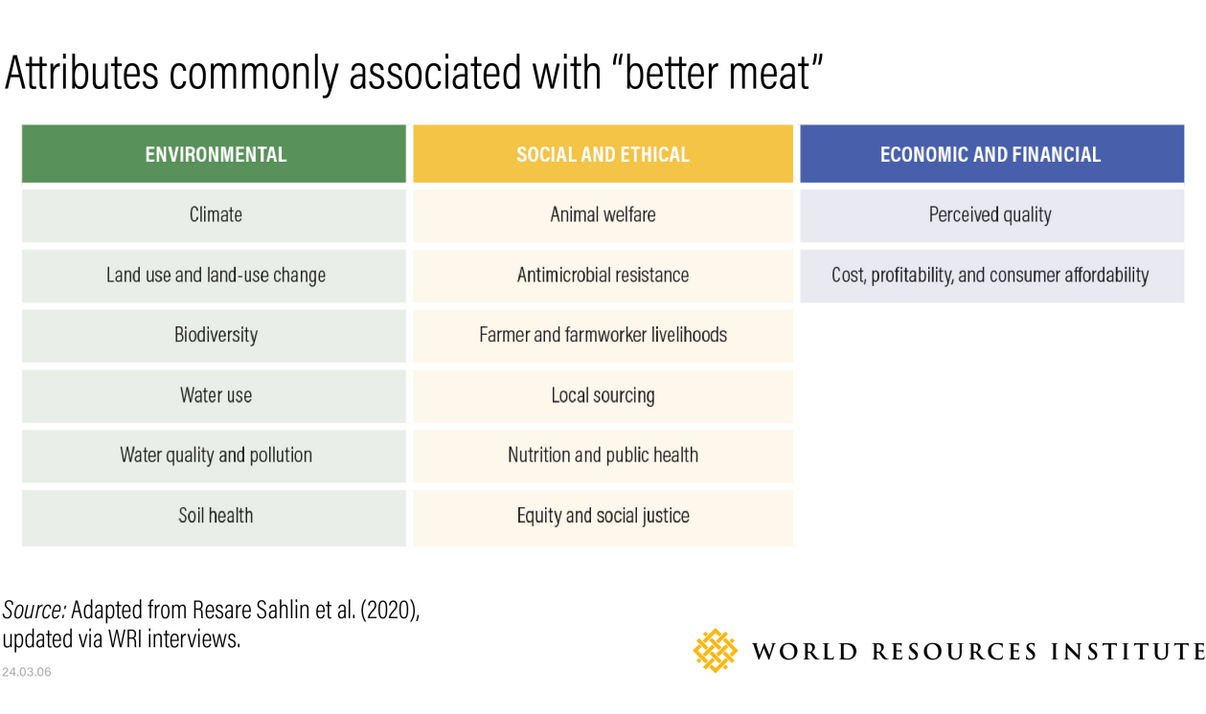
However, these attributes don't always align, which can result in trade-offs between different priorities.
For instance, beef is among the most greenhouse gas-intensive animal protein options. It requires 7 times more land and generates 7 times more GHG emissions than chicken per gram of protein. To companies with emissions-reduction goals, it may be tempting to simply shift what they source and sell from beef toward chicken. However, this shift has a clear negative animal welfare impact: It results in many more animals being slaughtered for the same amount of protein served to customers.
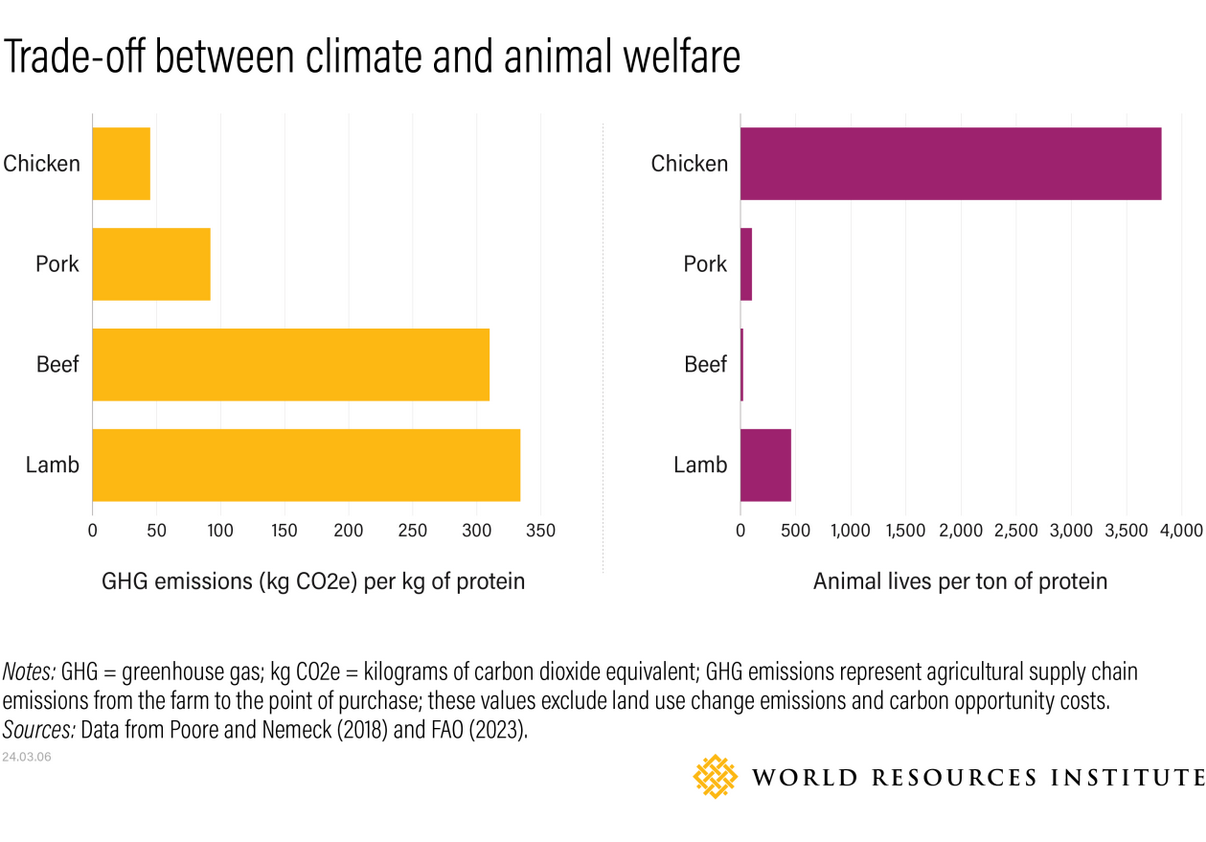
What’s Better for Animals Isn’t Always Better for the Planet
When it comes to alternative production systems such as organic, grass-fed and free-range, the trade-offs are more nuanced. These systems come with important benefits; for example, they can improve animal welfare by providing more space for cows to graze on pastures or for chickens to roam more freely. Alternative systems also tend to use antibiotics more responsibly. This can help slow the growing crisis of antimicrobial resistance that makes infections in both humans and animals harder to treat.
But, perhaps counterintuitively, these systems often come with higher environmental impacts per gram of protein compared to conventional production methods.
WRI analyzed research comparing the environmental performance of conventional and alternative animal production systems, using nearly 300 environmental data points from 45 studies conducted in North America and Europe between 2000 and 2022. We found that alternative systems led to increased environmental impacts in 75% of the data points. This is largely due to the way the animals are raised. For example, in grass-finished (grass-fed) beef systems, cattle grow at a slower pace and emit more methane during their lives than in conventional grain-fed systems, where they are fattened in the final months of their lives in feedlots. This leads to higher agricultural GHG emissions per gram of protein produced, relative to conventional systems.
Alternative systems also tend to require more land per gram of protein, whether for pasture, for increased space in confined systems or for feed production. This can lead to trade-offs between environmental impacts. Organic feed crop production, for example, may have lower on-farm GHG emissions than conventional production due to the lack of chemical fertilizer use. But it often has lower crop yields per hectare, too, requiring more land for the same amount of feed. This has important climate implications: Ongoing agricultural land expansion conflicts with urgent goals to end deforestation and restore ecosystems, which will be necessary to reach global climate goals and hold the world to 1.5 or 2 degrees C of warming.
To account for the climate impacts of these land use trade-offs, we estimated the “carbon opportunity costs” of land use under the different meat and dairy production methods. Carbon opportunity costs are the carbon losses from plants and soils that occur when natural ecosystems like forests are converted to agriculture. In other words, carbon opportunity costs translate agricultural land-use requirements into carbon dioxide equivalents.
When looking at “total carbon costs,” which include on-farm emissions as well as carbon opportunity costs, alternative meat and dairy production systems like grass-fed, organic and free-range had higher overall climate impacts per gram of protein than conventional systems in more than 90% of cases. This is because the climate impacts of the higher land use requirements ultimately outweighed these systems’ lower on-farm emissions.
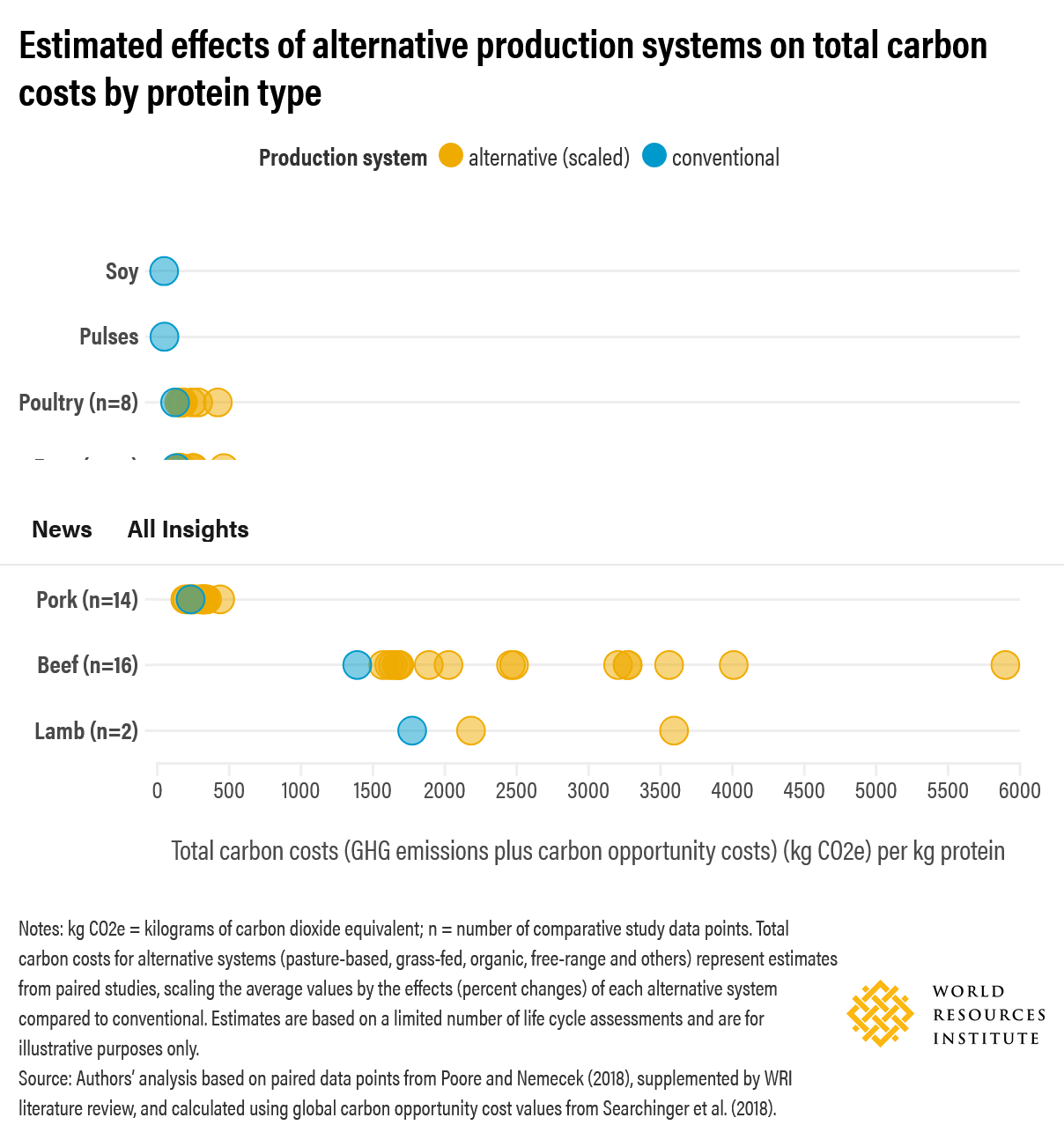
It is important to note that in 25% of the data points we reviewed, alternative production systems did have lower environmental impacts. Water use (freshwater withdrawal) impacts were most variable and were lower in alternative systems in nearly half of cases. Notably, several of the grass-finished beef production systems assessed relied on primarily rain-fed pasture for the entirety of the animals' lives. These required less water withdrawals than conventional systems that used irrigated crops as feed during the animals’ final months.
Furthermore, the studies we reviewed did not quantify on-farm biodiversity or soil health, which are important environmental sustainability metrics that can improve under alternative production systems.
But these potential improvements must also be weighed against land-use trade-offs. If alternative production systems yield less food per hectare, then more land will need to be cleared to meet growing global food demand, at a cost to biodiversity and soil health elsewhere. As noted above, agricultural land expansion has important climate implications.
Finally, there are many promising ways to reduce climate and environmental impacts within existing production systems, whether conventional or alternative. For beef, GHG emissions reduction strategies include improving efficiency and productivity (which is already relatively high in high-income countries), reducing enteric methane emissions (“cow burps”) through feeds and feed additives, improving manure management, and stabilizing and sequestering carbon in plants and soils. Many of these climate strategies can be pursued in ways that do not compromise animal welfare.
Sourcing Even Less Meat Can Help Balance These Trade-offs
There is no single way to produce meat and dairy that’s “better” for all environmental, social, ethical and economic considerations. Trade-offs abound. But there are ways to minimize these trade-offs.
One powerful step for any food provider wishing to serve “better” meat is to go beyond just sourcing less meat to sourcing even less meat. By further reducing the overall purchasing of animal-based foods — especially beef and lamb — organizations can create the climate “space” to source animal proteins that are “better” in specific areas.
In the scenario below, for example, reduced beef purchasing easily creates space for companies to source higher-welfare chicken and eggs. Even though the higher-welfare systems slightly increase the total climate impact of the chicken and egg production, the company can still hit an ambitious climate target.
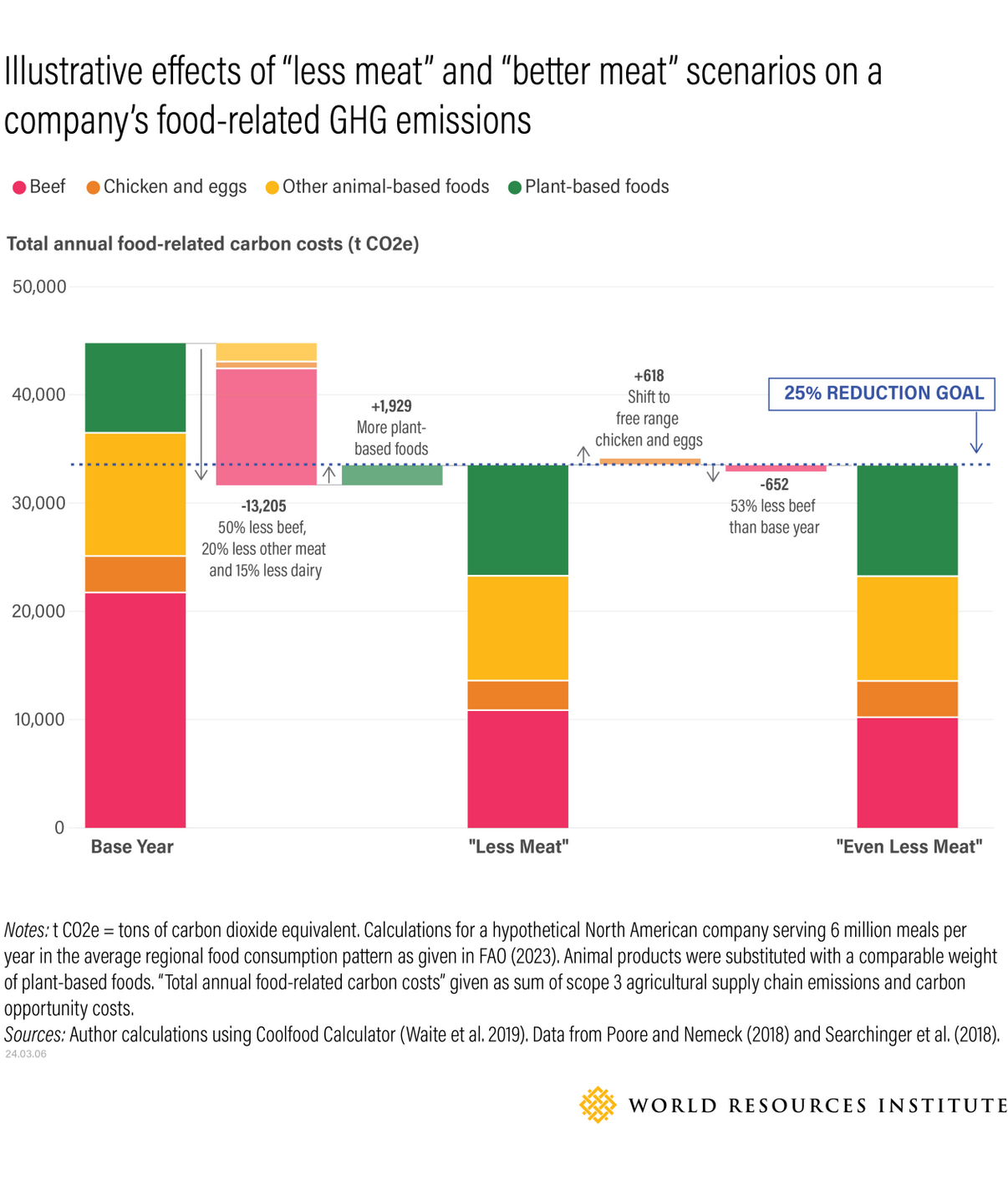
What Else Can Companies, Governments and Individuals Do?
Less meat still means sourcing some meat. But with careful planning, it’s possible to design an improved sourcing strategy that incorporates animal products — including those sourced with “better” attributes — while also meeting a company’s social, ethical and environmental goals. We recommend that food companies take the following six steps:
- Calculate the “scope 3” GHG emissions baseline of all food purchases, including animal-based foods, to understand how much of an impact meat and dairy has on their food-related carbon footprint.
- Shift from high-emissions foods toward lower-emissions foods in customer-friendly ways, including by improving the quality and quantity of plant-rich options. WRI’s Coolfood initiative can help companies set clear and measurable targets for GHG reductions.
- Define priorities around improved meat sourcing by product type, such as focusing on lower-emissions beef and dairy and higher-welfare chicken and eggs.
- Assess the potential impacts of planned sourcing changes on climate and other “better” meat priority goals. What are the potential co-benefits and trade-offs?
- If a “better” meat sourcing strategy increases environmental impacts, less meat needs to become even less meat to enable companies to still achieve their sustainability goals, as in the example above.
- Engage with suppliers to improve production practices and collect data. This can include data on changes to GHG emissions and other environmental, ethical, social and/or economic sustainability indicators of interest.
Individual people can adopt these principles in their own grocery shopping, too. For example: To lower your personal carbon footprint while still adhering to ethical concerns around animal welfare, you might choose to eat fewer burgers in a month. This could more than offset any increased emissions from purchasing organic, pasture-raised eggs.
Policymakers should also take note. Policies that seek to reduce domestic livestock emissions by shifting toward production systems that lower on-farm emissions may also increase overall agricultural land use. This can lead to “offshoring” the land use and climate impacts of meat and dairy production to other countries, unless domestic meat and dairy consumption also falls accordingly. Similarly, policies that seek to cut domestic emissions by simply reducing the overall amount of animals farmed (and meat and dairy produced) in a country also risk sending impacts overseas, given that global meat and dairy demand continue to grow.
There’s a better approach from a climate perspective. Governments and companies should encourage healthier and more sustainable consumption patterns, take steps to boost agricultural productivity and invest heavily in measures to cut agricultural production emissions. And they should carefully minimize trade-offs between “better” meat attributes.
One Size Doesn’t Fit All
If “better” meat looks different to everyone, so will the right approach to sourcing it. As companies, governments and consumers think through the links between meat, dairy, society and the environment, it’s critical that they do so with a clear view of the benefits and trade-offs. To learn more, read WRI’s full report here.


